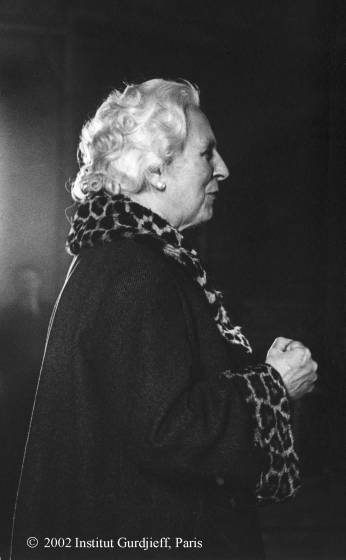
Gurdjieff International Review
Behind the Visible Movement
Quotations as recollected by her pupils
Jeanne de Salzmann (1889–1990) studied piano, composition, and orchestral conducting at the Conservatory of Geneva. Dancer and teacher of rhythmic movements, she was a pupil of Emile-Jaques Dalcroze who opened an avant-garde institute of the arts devoted to music, dance, and theater in Germany in 1912. During the Russian revolution, she and her husband Alexandre were living in Tiflis, Georgia, where she opened a school of dance and music. In 1919 the composer Thomas de Hartmann introduced the young couple to Gurdjieff.In the years that followed, Jeanne de Salzmann became Gurdjieff’s devoted pupil, and remained with him until his death in 1949. For more than forty years thereafter, she worked tirelessly to transmit his teaching and to preserve the inner content and meaning of the Movements. Here are some quotations as recollected by her pupils:
You must consider these Movements as a condition, an exceptional one given to you to work on your attention.
In so dividing your attention, you are filling the place that you can fill. One day you may be capable of more, but today, this is your place.
You do not realize enough that your attention is your only chance. Without it you can do nothing.
Usually you think about your movement, but you do not do it. You maintain your thought on the movement, and then when it is the time to do it you give up, and the movement is done, no matter how, without you.
These Movements are designed to enable us to pass from one center of gravity to another; it is the shift that creates the state. The gesture, the movement, is what is important, not the attitudes.
| Copyright © 2002 Institut Gurdjieff, Paris This webpage © 2002 Gurdjieff Electronic Publishing Featured: Spring 2002 Issue, Vol. V (1) Revision: May 1, 2002 |